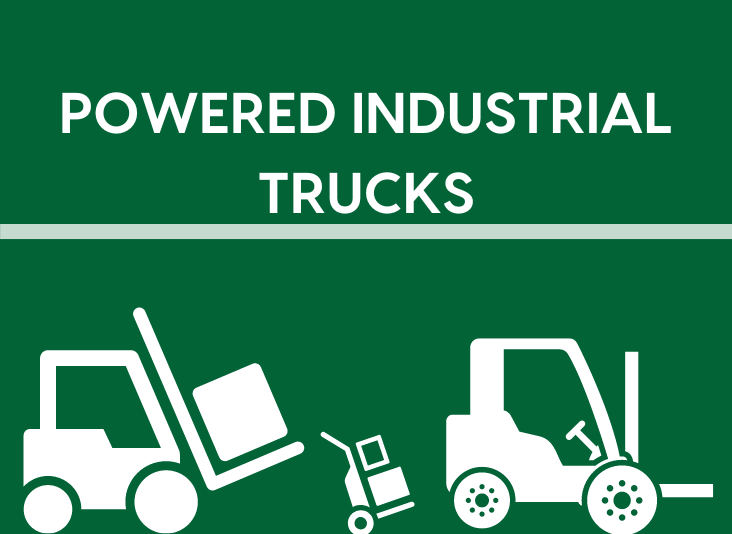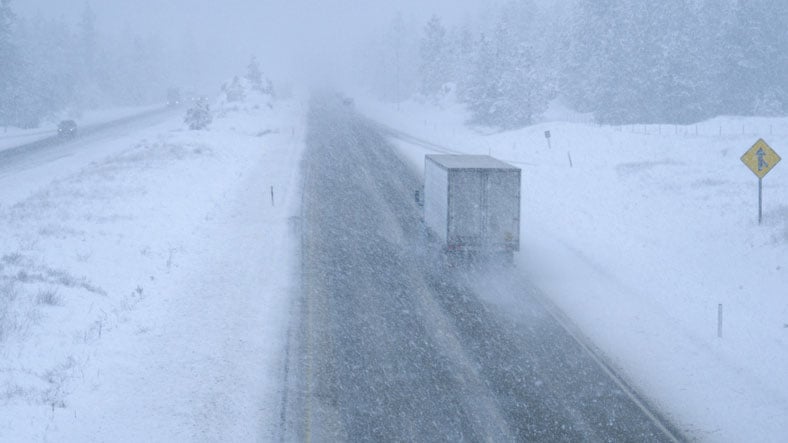Put the Safety Pedal to the Metal: Powered Industrial Trucks
We continue our analysis of OSHA’s top 10 most frequently cited standards with a look at the "Powered Industrial Trucks" safety standard.
Powered Industrial trucks are great enablers of industry—but they are also a major source of danger to organizations of all types. Powered industrial trucks are essential to virtually any type of commercial activity—but these machines also pose a wide range of significant safety risks.
In fact, safety in regard to these tools is so important that Occupational Safety and Health Administration’s (OSHA's) Powered Industrial Trucks safety standard (29 CFR 1910.178) was the seventh most violated in 2022. Fortunately, thorough training and the prioritization of a few key best practices can help organizations protect their operations, workers, and the public from unsafe truck operations.
Given the widespread risks of working with powered industrial trucks—and the severity of the dangers they pose—OSHA is especially strict in enforcing the relevant guidelines. Those managers who fail to comply face severe consequences. Not only can non-compliance result in preventable accidents, but official penalties can include citations and fines of up to $15,625 per violation.
Industrial Trucks: Backbone of Operations
Almost every industry relies on some sort of powered industrial truck at some point during operations. OSHA defines “powered industrial trucks” as including:
- Fork trucks
- Tractors
- Platform lift trucks
- Motorized hand trucks
- Any other specialized electric motor or internal combustion engine powered industrial truck
This doesn’t include:
- Farm trucks
- Hauling or earth moving machines
- Equipment powered by compressed air or nonflammable compressed gas
All of these machines are crucial to ensuring operations are performed quickly and efficiently while helping employees avoid injury. Forklifts, for example, are beneficial as they are small and compact but have great lifting power and are easily maneuverable. This making them a good packhorse for facility load movement. Motorized hand trucks can prevent injury by lifting large loads, thus allowing employees to avoid exhaustion, strain, and fatigue.
According to OSHA, 1.5 million workers operate 856,000 powered industrial trucks nationwide. Powered industrial trucks have endless applications and literally drive industry and commerce.
Powered Industrial Trucks Introduce Broad Risk
The broad adoption of workplace powered industrial trucks underscores the potential danger from these types of accidents—more trucks in use means more workers operating them, which increases the chance of mishap or injury.
A truck is as dangerous when mishandled as it is useful when properly handled. While these machines can enable safety and efficient operations, they can also cause harmful accidents. Most commonly, accidents are caused by improper use, driver distraction, or poor maintenance and design. Hazards can range from accidental fires to collisions and more.
Most powered industrial truck hazards can be classified as:
- Collisions: If a powered industrial truck operator becomes distracted, they risk running into other equipment or pedestrians, injuring themselves or others.
- Tip-overs: Unfocused drivers also risk injury by accidentally driving off loading docks or elevated surfaces, or even tipping over if the truck is unbalanced.
- Falling loads: There is a risk of objects falling from above when trucks lift items above head-level—and falling debris can hit workers and cause injury.
- Fire/explosion hazards: Internal combustion engines may explode or catch fire when operated too closely to a spark, such as a cigarette or spark from other industrial equipment.
Organizations that don’t take these hazards seriously often violate OSHA’s Powered Industrial Trucks safety standard—meaning fines that can easily reach tens of thousands of dollars. On top of this, on-the-job injuries can:
- Disrupt operations
- Distract workers and managers from core business activities
- Incur costly medical bills
- Foster employee and/or community distrust
It really is in the facility manager’s best interest to ensure all relevant guidelines are strictly followed.
Safety While Using Powered Industrial Trucks
To help mitigate these hazards, there are a few key things to keep in mind regarding the safe and proper use of powered industrial trucks—so you and your workers can use them safely.
OSHA’s Powered Industrial Trucks safety standard applies to all workplace-based trucks and defines a broad set of safety practices needed to compliantly operate these machines. Naturally, it can be a challenge to adopt all these guidelines—but we’ll discuss the four main types of accidents and how to best avoid them:
One: Collisions
- Where lighting is low (less than two lumens per square foot), lighting should be installed and operational on the truck to improve visibility.
- Trucks should not be driven up to personnel stationed in front of a fixed object.
- Within facilities or on roadways, all traffic regulations should be followed.
- Three truck lengths should be left between the truck and the closest other truck.
- Within the facility, there should be sufficient headway between the lowest ceiling elements, such as sprinklers, lights, and more, and the highest possible load height of the truck.
Two: Tip-Overs
- A load backrest extension should be placed to minimize forward tip-overs.
- Motorized hand trucks must enter confined spaces with the load end forward to prevent uneven load distribution in a small, less navigable space.
- Only stable or safely arranged loads should be lifted, and only to the capacity for which the truck is rated.
Three: Falling Loads
- High Lift Rider Trucks must be fitted with an overhead guard—unless in rare circumstances where operational conditions prevent this.
- No person shall be allowed access to the area underneath the elevated portion of a powered industrial truck, even if it is not loaded, to prevent loads falling onto them from the truck.
- An overhead guardrail should be used to prevent small packages or loads from falling to the work surface below.
- All dockboards and bridge plates shall be secure before being driven over so the truck does not fall or drop its load onto the workspace below.
Four: Fire/Explosion
- Powered industrial trucks have different designations depending on their power systems. The designation of a truck indicates in which environments it can be used. This is extremely important to prevent explosions, as it ensures the truck is never in an environment where the environment contains explosive particles.
- During battery replacement, technicians must apply appropriate mitigation strategies—including proper management of battery acid that may spill because of these changes.
- Smoking is prohibited in all charging areas, as it may cause explosions or fires in internal combustion trucks.
Implement Truck Safety Training
Of course, above all of this, the key to ensuring powered industrial truck safety is training. Only competent specialists may operate any powered industrial trucks, trained under the direct supervision of someone who has the experience to evaluate their competence. At a minimum, workers must be trained in vehicle operations, load limits, and appropriate surface conditions for operation.
For full thoroughness, training should also include:
- Information about how to leave a truck safely unattended
- How to identify all necessary markings and nameplates
- What protocols to follow for repairs
- Why repair and maintenance should be restricted to trained personnel
Refresher trainings are mandatory whenever:
- A worker is assigned a different truck
- An accident or near-miss occurs
- Workplace truck use conditions change
- Whenever otherwise appropriate
Partnering for Powered Industrial Truck Success
Adherence to these guidelines is a great first step to Powered Industrial Truck compliance—but this list is not exhaustive. OSHA’s Powered Industrial Truck regulations are strict and extensive—and may be hard to fully implement alone.
Luckily, Triumvirate Environmental can help. With a knowledgeable and experienced consulting team and the option for on-site support services implementation, we can help ensure safe use of powered industrial trucks, avoidance of fines, and safety of staff. Contact us today to learn more.







